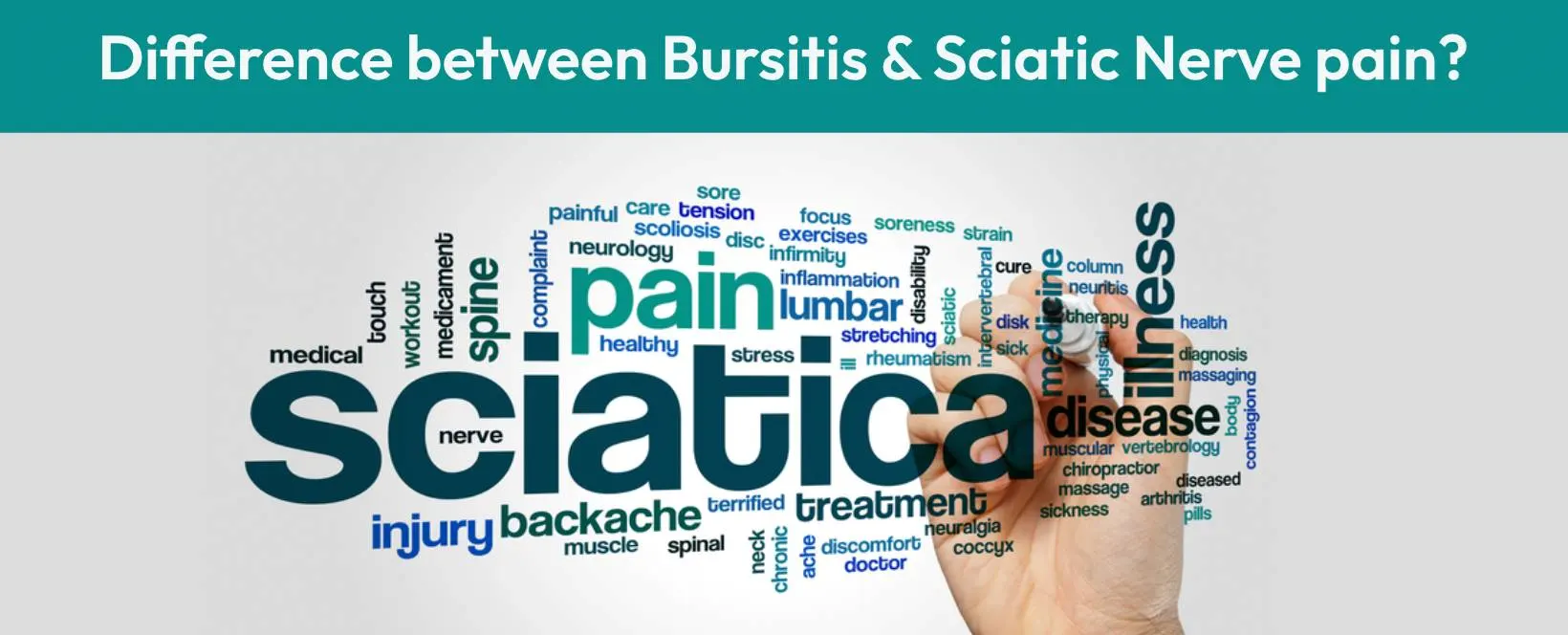Difference between Bursitis & Sciatic Nerve Pain

Battling Bursitis vs. Sciatic Nerve Pain
Grasping the causes is key to overcoming these discomforts. Bursitis, an inflammation of tiny sacs cushioning joints, instigates localized pain, swelling and limits movement.
Conversely, sciatic nerve pain, stemming from compression or irritation, feels like a radiating agony from the lower back down the leg. The art lies in understanding these distinctions, opening doors to available remedies for relief.
Origin of the Pain
Bursitis finds its roots in repetitive motions or prolonged joint pressure, often ignited by activities like kneeling or leaning on elbows. Direct trauma or infections contribute to its emergence.
On the flip side, sciatic nerve pain, more commonly known as sciatica, springs from lumbar spine complications, where a herniated disc applies pressure to spinal nerves. Other culprits include spinal stenosis, bone spurs, muscle imbalances, or the strains of pregnancy.
Routes towards Relief
Facing off against the burdens of bursitis or sciatic nerve pain demands strategic approaches for comfort and enhanced mobility. Options span from physical therapy to anti-inflammatory medications and targeted exercises that fortify weakened areas. Introducing Revolutionary Relief™ into the mix, a blend of powerful anti-inflammatory botanicals, could potentially expedite the healing process.
Insights
First step to recovery lies in recognizing the root differences and selecting interventions tailored to individual needs. Recognizing unique symptoms unlocks a variety of treatments, spanning therapy, medications, and exercises.
The inclusion of Revolutionary Relief™ – a blend of powerful botanicals like Arnica Montana, Frankincense and high absorption hemp extract (Kannopia-Active™), stands out as a natural alternative, without the side effects usually associated with prescription pain medication.
Blog disclaimerThe information provided on this blog is for general informational purposes only. It should not be used as a substitute for professional medical advice, diagnosis, or treatment. Always seek the advice of your physician or other qualified health provider with any questions you may have regarding a medical condition. The authors and publishers of this blog are not liable for any errors or omissions in the content nor for any damages arising from the use of information contained within it.





